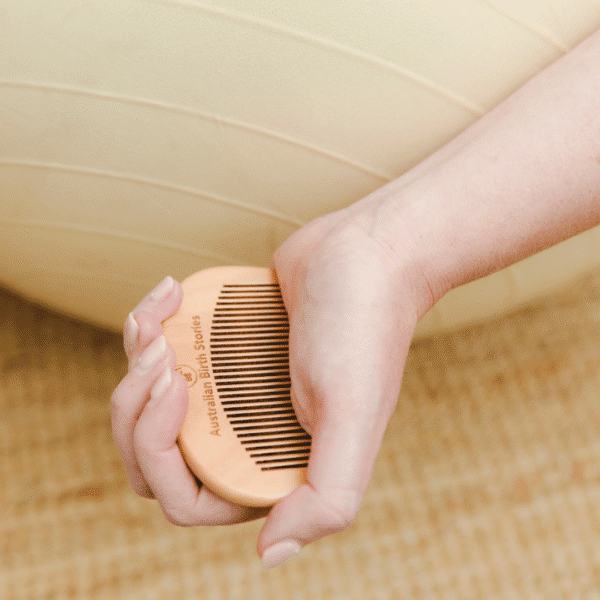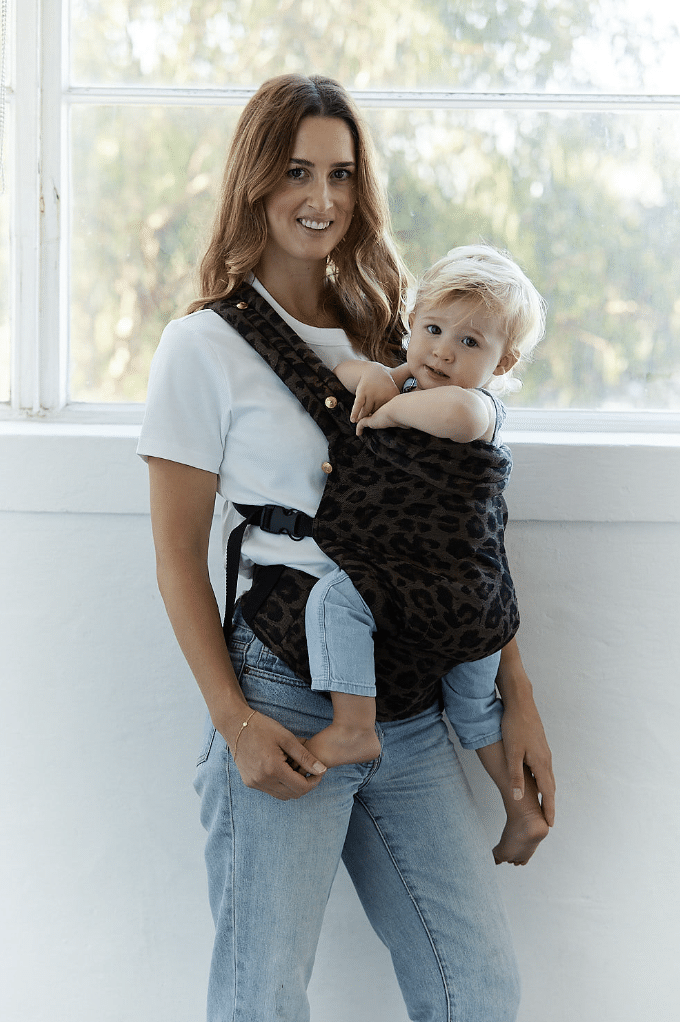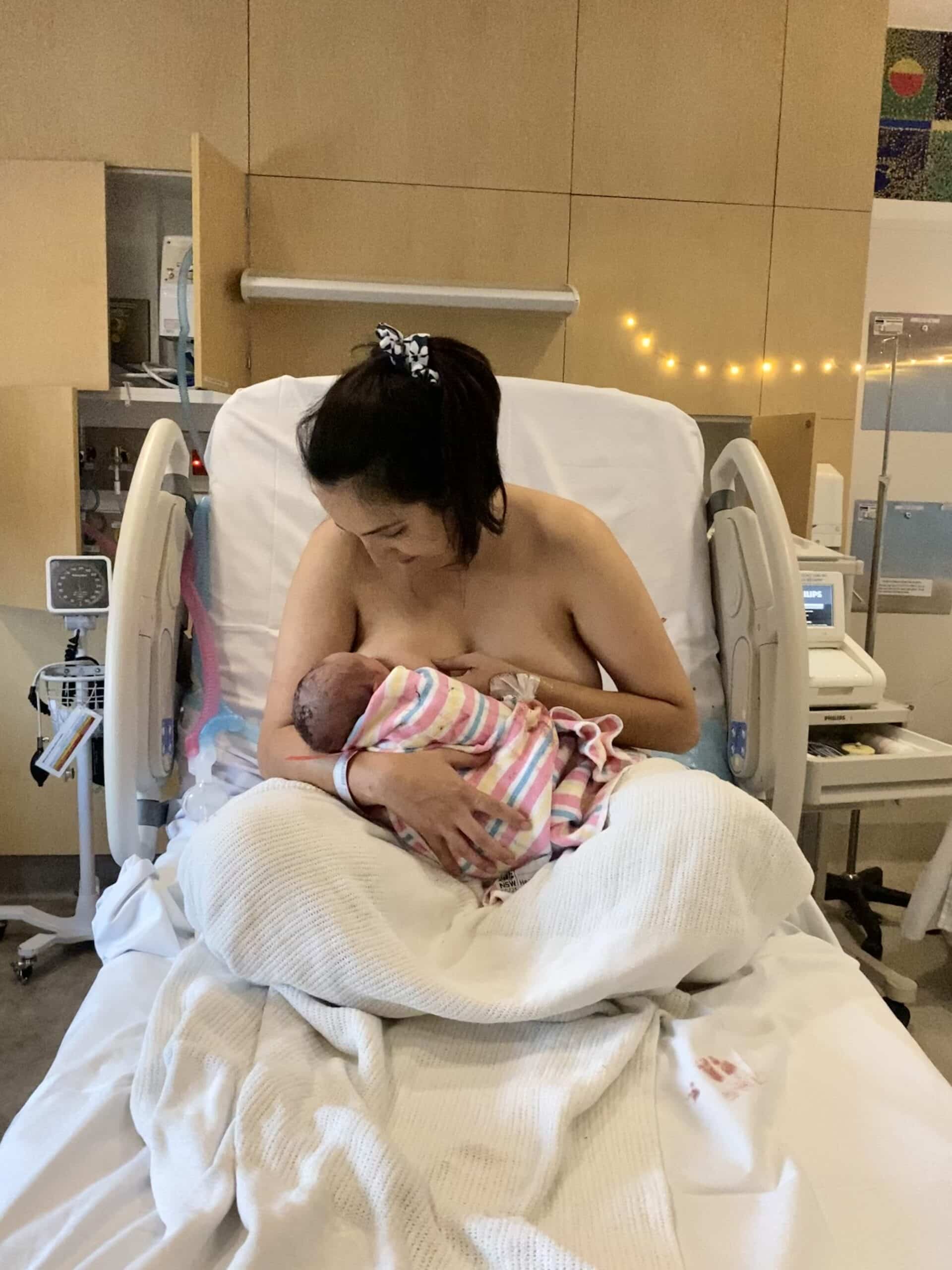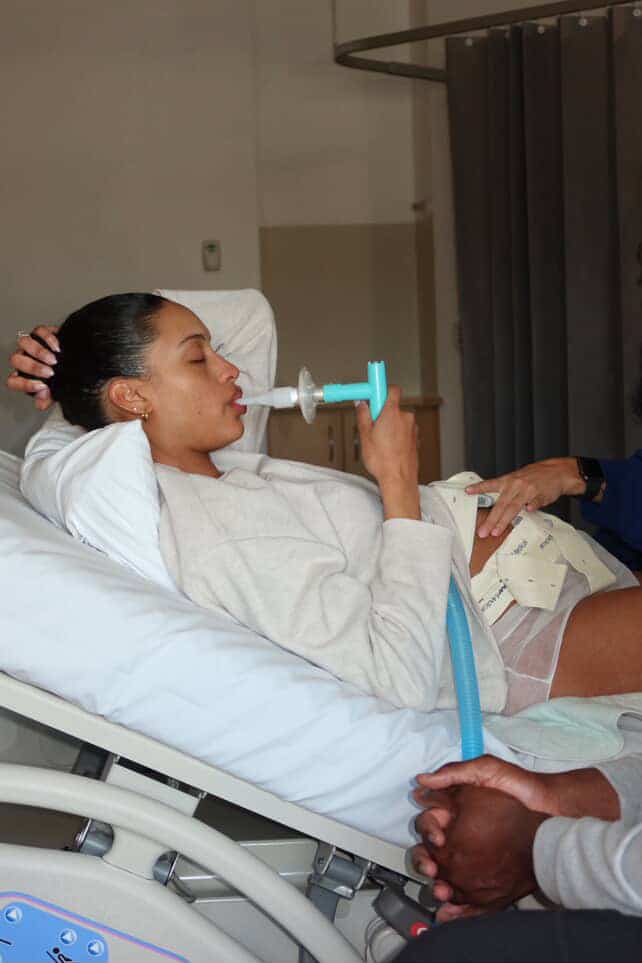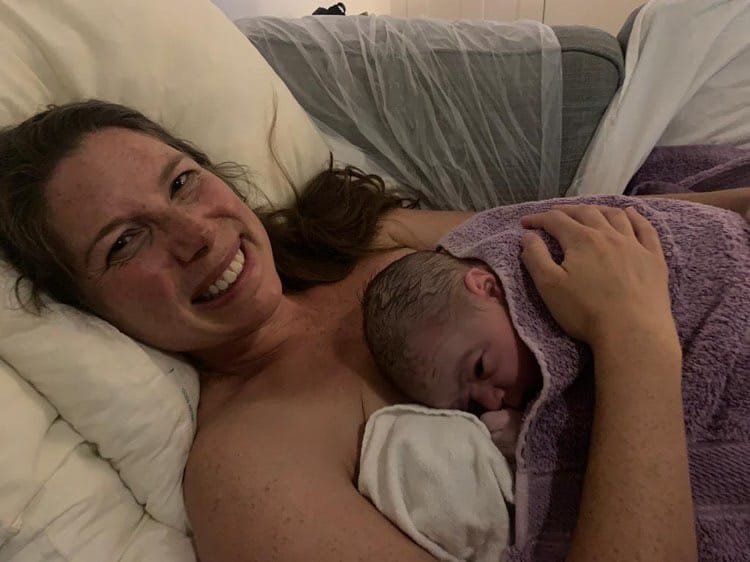Podcasts Paige
EPISODE 371
Paige
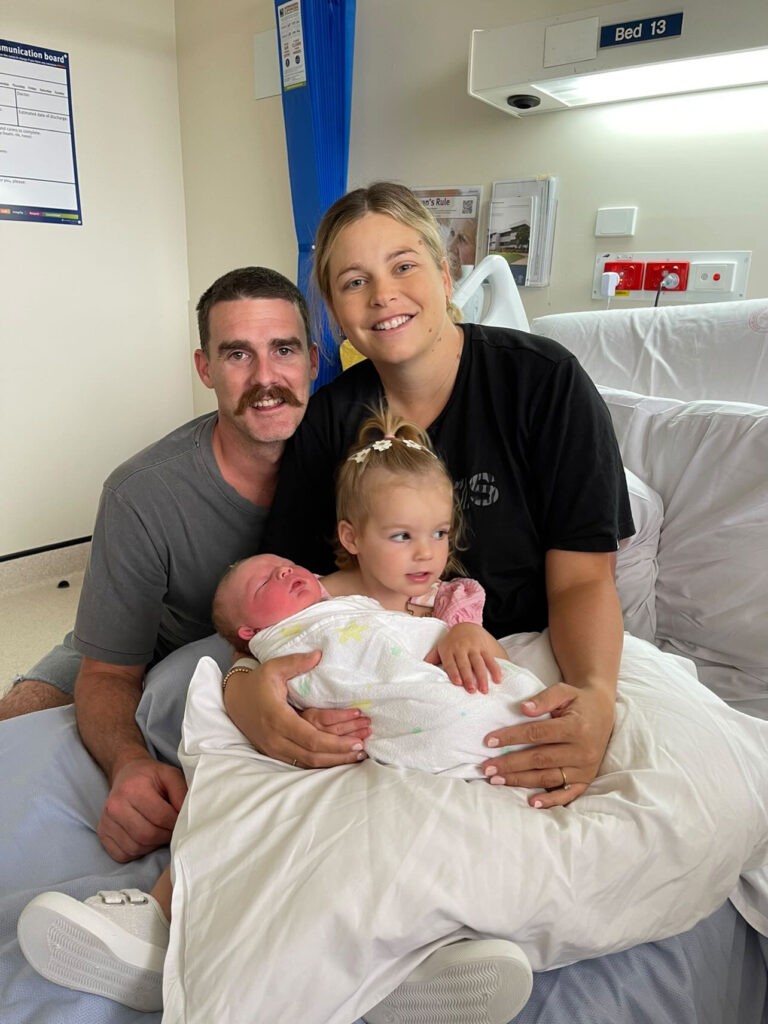
In today’s episode Paige shares her birth experiences in Gladstone (population 60,000+) where the hospital is currently on bypass for all maternity patients. It’s a huge issue and a prime example of the maternity system crisis (we’re seeing similar situations in Geelong, Victoria and Burnie, Tasmania). She takes us through her two pregnancies and births, including her second where she was diagnosed with gestational diabetes but was educated enough to request a different treatment plan and avoid an induction. At 39 weeks she didn’t know where she would birth – an unsettling feeling – and when her labour progressed quickly, she was supported to birth at Gladstone but knew she couldn’t have pharmacological pain relief. Her birth was positive and empowering but five hours later she started haemorrhaging and was transferred via ambulance to Rockhampton hospital where she stayed for three days.
“Our maternity service has been on bypass for over 200 days which means that we can’t birth in Gladstone and we’re required to drive two hours to Rockhampton to birth our babies. The maternity department cares for over 600 women each year. From the conversations I’ve had with medical professionals in Rockhampton, they’re really under pressure too.
“I fell pregnant in May 2020 and at that time the services were all up and running. We don’t have a private hospital or private obstetricians in Gladstone but I wanted to go public anyway. I work in the system and I trust it. I got into the MGP programme, even though I knew nothing about it. I was extremely naive.
“I was diagnosed with hyperthyroidism which is a risk factor for gestational diabetes but I never developed it. I was considered low risk throughout that pregnancy. I did absolutely no birth education; I was of the mindset that I’d go in, have the baby and it will be what it will be. I don’t regret anything but there are things I’d wished I’d done more research and education.
“I had a stretch and sweep at 39+5 and at that time I felt fantastic and wasn’t uncomfortable. A few days later I had a busy day of errands and that night I was on the couch and I noticed that my belly was really hard. I went to bed and woke at 3am and thought I was in labour because I couldn’t lay still or get comfortable. I went out to the loungeroom to bounce on the ball and listen to my music. I was using a TENS machine which was helpful, too. I was managing really well and by then the contractions were about 4 minutes apart.
“At 7am I called my midwife and she reassured me and encouraged me to stay home and keep labouring. At 8am my waters broke and the next contraction was horrific; it was so painful. I got in the shower and I was crying and Andrew called the midwife and she told us to go to hospital. I was 4cm once I was checked and I wasn’t coping; we had no coping mechanisms. I tried the gas but I’m quite sensitive to pain relief and it made me extremely nauseous. I asked for an epidural and thankfully there was an anaesthetist on staff so I got it fairly quickly.
“It was lovely; the epidural was fantastic. I never felt the urge to push or any other sensations. From midday we were just chatting with our midwife about names and it was just a lovely experience. I had a CTG monitor on and it wasn’t picking up Adelaide’s heartrate very well so I got a fetal scalp monitor. She started to get a bit distressed and I was 10cm at this point so my midwife encouraged me to push and she told me she could see the head. The obstetrician came in and said that the vacuum was probably the best option. I have a medical background and I was well aware that it was serious and I birthed her quite quickly with the vacuum assistance. I really didn’t want an episiotomy and my midwife advocated for me because she knew what my preferences were and thank goodness because I only had a very small tear.
“Adelaide came straight to my chest and she was perfectly fine. I wasn’t really exhausted and I knew what was going on so I’m very grateful for that; I remember it quite vividly because I was so alert. Unfortunately I did get the shakes and nausea from the epidural so I only had her on my chest for about five minutes. I stayed on the ward overnight and the next morning we went home.
“My second pregnancy was planned and at that time, the maternity system was fine and there was no indication that there was going to be a change. I got into MGP again and since I had Adelaide I was birth crazy; I’d listened to all the podcast episodes and I was engulfed in it. I was checked early again for gestational diabetes because of my thyroid issues and it was confirmed that I had it but luckily I could stay on the MGP programme.
“My issue was my fasting blog glucose levels in the morning so I worked closely with a diabetes consultant and I started on the metformin tablets and they helped. Eventually I had to move to insulin and I was really down about it and I didn’t want it to be a determining factor for my birth. I knew there was a high risk of induction but I also knew that there was no way around it. I was completely well managed and I’m grateful for that.
“At 28 weeks I had an appointment with the obstetrician and there was an induction pamphlet sitting on the bench. She told me I would be induced because of GD and a big baby and I told her I was unwilling to discuss it at that stage. If this was my first pregnancy it would have been a completely different story but I knew I could ask questions and that they weren’t in control of my care.
“I didn’t want additional scans because I knew it wouldn’t have any benefit; I knew I could birth a big baby. This is where MGP was so helpful because she explained that they were looking for growth restriction as well as big babies so she said it can be helpful. I had extra scans at 28, 32 and 36 weeks. At 28 weeks he was measuring in the 98th percentile so everyone was concerned, even the sonographer was commenting on it. At 32 weeks he was in the 93rd percentile but then at 36th he was measuring in the 79th percentile so that made the conversations with obstetricians so much easier.
“Halfway through the pregnancy I just didn’t know where I was going to birth because I didn’t know how my labour would play out. If I had a slow labour I would go to Rockhampton but if I got to Gladstone and labour was progressing quickly so I would stay there. I also have Adelaide, we’ve got pets, my partner was working. The expectation was that we would drive up or get an ambulance transfer but there’s no clear pathway and I suppose it’s hard because birth is so unpredictable. I wanted to labour at home and utilise the comfort of home so that was disappointing because it wasn’t going to be an option.
“I started looking into the private sector and as soon as I flicked to the gestational diabetes page they said I’d be induced at 38/39 weeks so that wasn’t an option for me. There are midwives atGladstone but there needs to be an obstetrician overseeing the maternity unit. I think they’ve just struggled to recruit obstetricians because it’s a regional area and there is higher pay in cities. We don’t have resources or funding here; we’re always stretched and that’s no solution to the problems.
“I knew that if I was to birth in Gladstone I couldn’t have an epidural because there wasn’t an obstetrician on staff to monitor. That concerned me because I wanted that option; it became a significant stress. If I was going to Gladstone I knew that I would be doing it without pain relief. We’d done a birth course and if I’d say anything to a pregnant couple, I’d say do birth education.
“Towards the end of the pregnancy, our plan was that if we went into labour during the day on a weekday, we’d go to Gladstone but if it was any other time, we’d go to Rockhampton. At 39 weeks everything was tracking well and I saw my midwife. A few days later Rockhampton called and said I needed to see an obstetrician as soon as possible. We had a telehealth appointment and I had my midwife supporting me. Rockhampton said that based on my GD and insulin I needed to be induced the next day. They said the risk was stillbirth so I asked what the risks were and my risk factor was tiny so I said I was willing to accept that risk and decline induction. I had to sign a declining medical advice form because I was going against what was recommended. I was required to go to Gladstone every second day for CTG monitoring and I accepted an induction at 40+5 but I was confident that I would go into spontaneous labour beforehand.
“A big worry of mine was also tearing badly and having to transfer to Rockhampton to be stitched up. I’d been eating dates, drinking raspberry tea, bouncing on the ball, I had acupuncture…I was doing everything to go into spontaneous labour. On Friday night I was in the shower and noticed my back was sore and I couldn’t get comfortable. I went to bed and at 3am I woke up and was having contractions so I made the call just to pack the car and drive to Rockhampton. I called my midwife and she asked me to go to Gladstone first as I needed to be assessed so they could advise whether it was safe for me to travel.
“We got to the hospital and I could still talk. The midwife checked me and told me I was 5cm and incredibly stretchy and she told me that I wasn’t going anywhere. I cried because I knew I was scared of the pain and couldn’t have pain relief. After being in the bath I got out and I was 8-9 cm and my waters hadn’t broken. My baby’s head wasn’t in the best position so I got back in the bath and my midwife helped me do this manoeuvre to encourage the baby into a better position.
“My midwife broke my waters and from then on it happened pretty quickly. I think I pushed for fourteen minutes and he was born. My midwife used a warm compress on my perineum and she really guided my pushes. He came up to my chest and I didn’t have any tears or perineal trauma. He was almost 4.2 kg! I had the most euphoric feeling, it was incredible. The pain of the contraction had overridden the pain of my perineum stretching. I really wanted to do a breast crawl with him but he was quite sleepy so he really had no interest; he eventually latched and fed.
“I was starting to bleed a bit so my midwife suggested the injection for a managed third stage. Andrew had skin to skin with Tate and I had a shower and I felt incredible. Five hours later our families were visiting and I stood up and had a huge haemorrhage; clots were just falling out of me. The nurses rushed in and got me cleaned up and shortly afterward I stood up again and it was like the placenta was falling out of me, there were multiple clots the size of my palm. I didn’t have any inkling that it was coming. I can’t fault the midwives – there were three of them – and they were incredible. They were following PPH protocol and unfortunately I had a cannula put in and had to have lots of drugs but obviously it was lifesaving. After the second one I had no more bleeding, my uterus was shrinking and firm. They had to notify Rockhampton and it was about 6pm when everything had settled but the obstetrician at Rockhampton was adamant that I get transferred up there. The ambulance didn’t get to me till midnight, even though they’d called it at 6pm so we were just waiting and then we were awake all night.
“We got to Rockhampton at 2am and the obstetrician did an internal to ensure I didn’t have any retained clots or tears on my cervix. After that they sent me to my room and did bloods; my haemoglobin was incredibly low so they suggested an iron infusion but my haemoglobin was still dropping so at three days postpartum I had a blood transfusion. After that I was really keen to get home.
“I feel like I was robbed of those first few days and Tate has been unwell since we came home so it’s been a really big two weeks. I couldn’t have asked for a better birth and I also know you can control or help postpartum complications.”

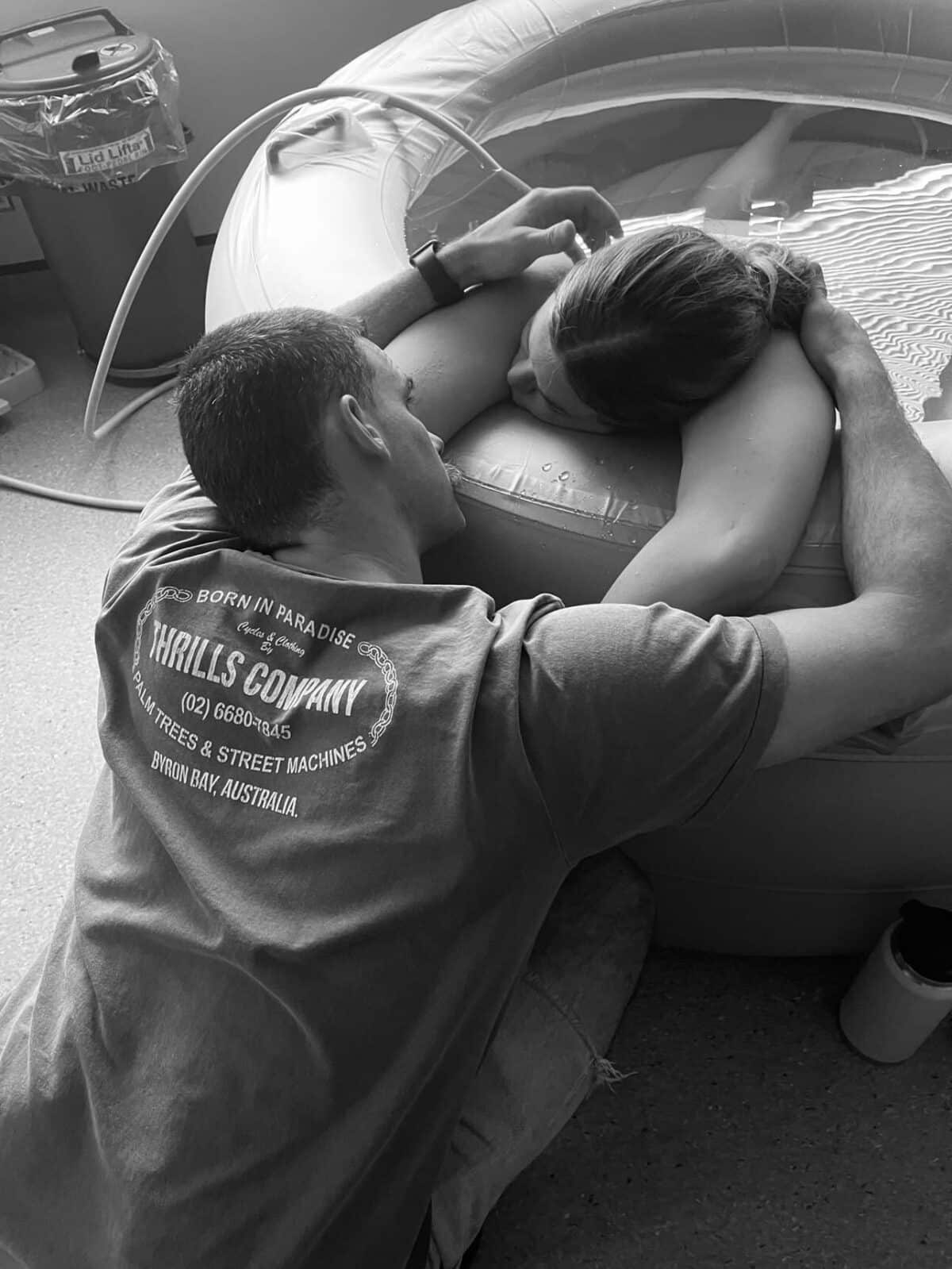
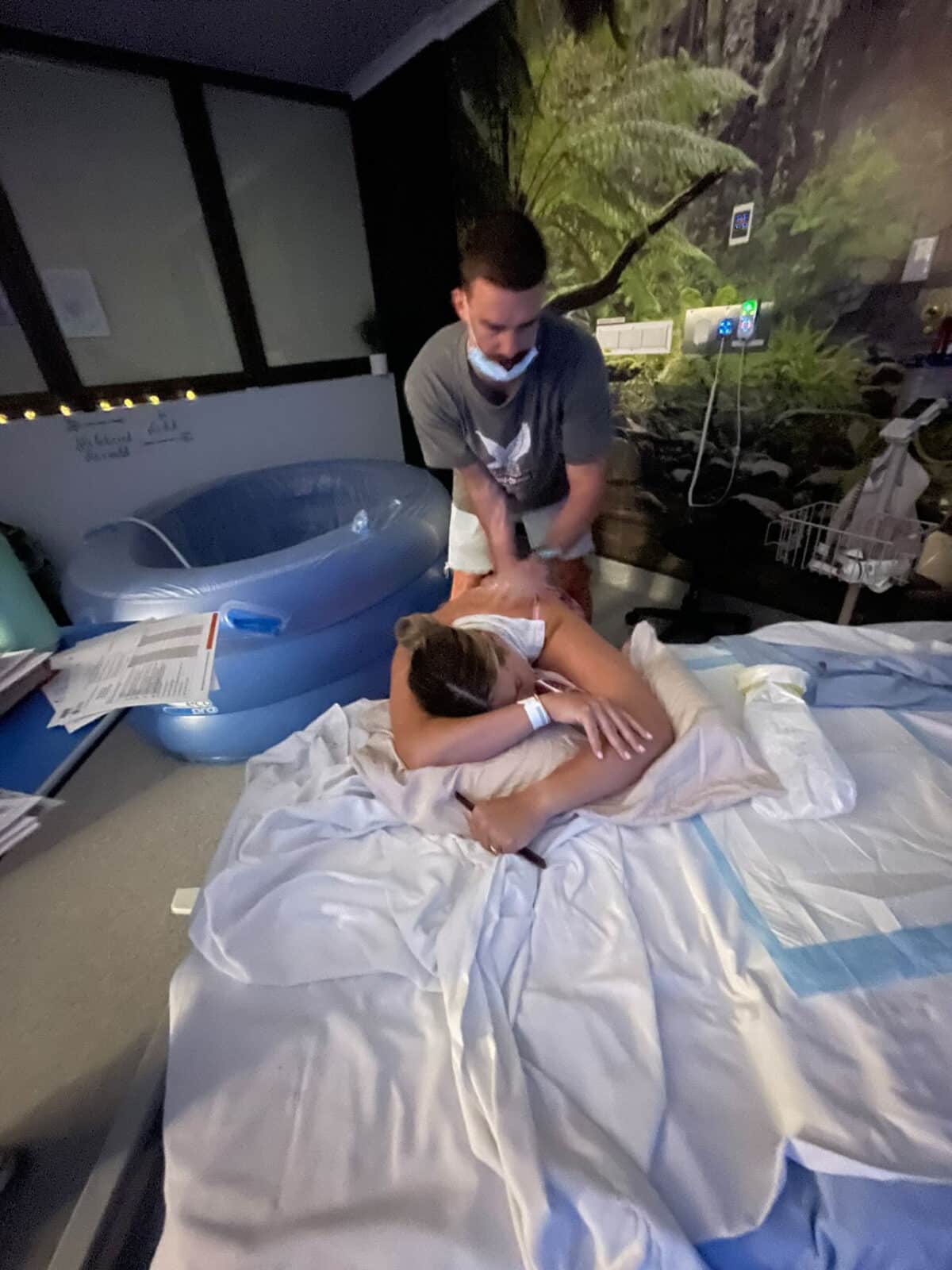
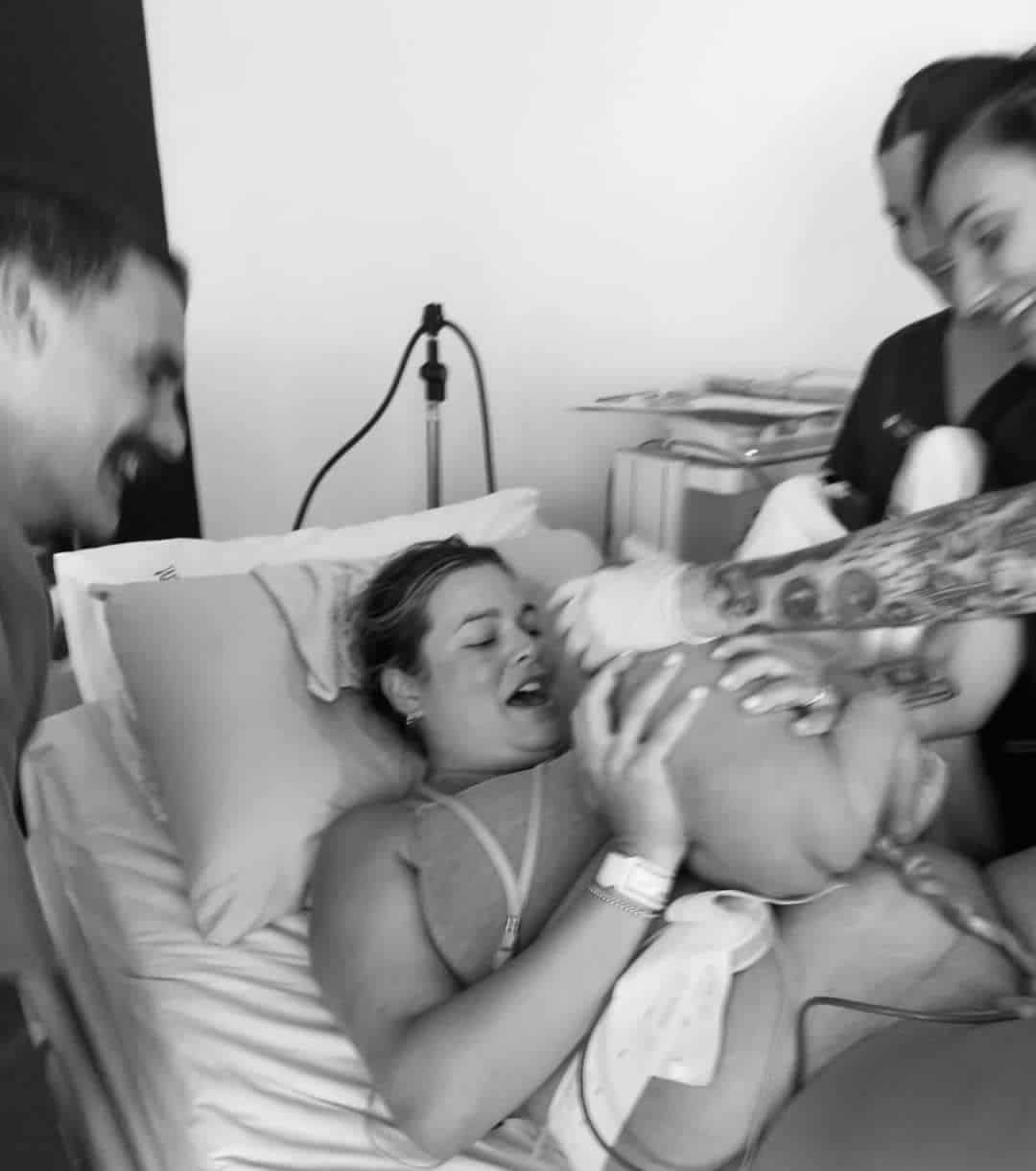
Topics Discussed
Epidural, gestational diabetes, Gladstone, Hyperthyroidism, insulin, maternity crisis, MGP, PPH, Spontaneous labour, Two Babies
Episode Sponsor
This episode is brought to you by The Birth Class, my online childbirth education course.
Featuring 10 audio lessons with perinatal health specialists, you can listen from the comfort of your home when you’re relaxed and receptive to new information. The Birth Class is a conversation starter between you and your birth partner that informs, encourages and empowers you to journey towards labour with knowledge and confidence.
In The Birth Class you’ll be guided through every stage of labour and birth, including:
– the powerful role of your hormones to prompt contractions and moderate pain
– what to expect from each stage of labour; from the first contraction to birthing your baby and the placenta
– practical breathing and sound skills to help you navigate contractions and overwhelm
– the benefit of staying active in labour and how it can assist cervical dilation
– how optimal maternal positioning in late pregnancy can encourage your baby into an ideal birth position
– how to prepare for a successful vaginal birth after caesarean (VBAC)
– your pain-relief options, both non-pharmacological and pharmacological
– the risks and benefits of birth interventions and how they can help or hinder labour
– typical complications that lead to an emergency caesarean and what’s involved in the process
– what to expect in the hours after birth, including breastfeeding and blood loss
– breastfeeding advice to guide you through the fourth trimester with confidence.
– and so much more.
Check out The Birth Class here.
Categories
Related Products
-
Birth Combs: Harness Your Body’s Natural Pain Relief
$24.95Crafted from smooth, natural wood, our birth combs activate specific pressure points in your hands that trigger your body’s innate pain-relieving responses.
Join the conversation
Sign up to get the latest updates, freebies, podcast releases straight into your inbox
@AustralianBirthStories
Follow along with us
@AustralianBirthStories
Follow along with us
@AustralianBirthStories
Follow along with us
@AustralianBirthStories
Follow along with us
@AustralianBirthStories
Follow along with us
@AustralianBirthStories
Follow along with us
@AustralianBirthStories
Follow along with us
@AustralianBirthStories
Follow along with us
@AustralianBirthStories
Follow along with us
@AustralianBirthStories
Follow along with us
@AustralianBirthStories
Follow along with us
@AustralianBirthStories
Follow along with us
